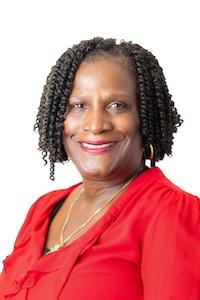The Way to Address the Staffing Shortage Is to Better Support Healthcare Workers

It is a new year, but nurses continue to experience the same challenges that have plagued the profession for years. One of the biggest threats to the nursing profession is understaffing. Although nurses were hailed as heroes at the start of the pandemic, today, many are not treated as such.
In fact, some nurses are leaving the profession due to chronic understaffing, opting instead to retire or find work in other industries rather than jeopardizing patients or themselves. Some are moving from state to state in search of higher pay and improved conditions. Others are suffering from health conditions that compromise long-term sustainability.
Admittedly, COVID-19 didn’t cause the understaffing crisis, but it exposed longstanding challenges. For decades, nurses have lamented hospitals hiring too few healthcare workers to manage the caseload and acuity of persons who are ill. To add insult to injury, nurses’ requests for pandemic pay is not being consistently honored. And many healthcare professionals still lack a sufficient supply of personal protective equipment (PPE). Others are furiously completing POAs to document the dangerous conditions in which patients and nurses find themselves.
What Is the Solution?
When nurses advocated for a safe staffing law in 2019 and 2020, we expected relief that would force hospital systems to provide ensure better working conditions. But employers, determined to avoid implementing the law, used the COVID-19 pandemic to lobby for delays. They argued that the measure would impose a hardship on employers without documenting or fully detailing the consequences of short staffing on patients, community members and healthcare professionals. Consequently, the implementation of the two nursing home staffing laws has been delayed by Gov. Kathy Hochul. While the hospital industry sought to delay implementation of the hospital staffing law, NYSNA successfully lobbied Gov. Hochul and demonstrated that the hospital staffing law would not decrease health systems’ capacity during the pandemic. In some facilities, NYSNA has begun rolling out the staffing committee process that was a key part of the law.
It is critical that these laws are fully implemented to stave off healthcare professionals leaving the industry.
This Much is Clear
It should be clear that today, nurses find ourselves in a crisis of epic proportions. From health and hospital systems to government agencies, it feels like we are being let down. The Department of Health (DOH) has been slow in promulgating the staffing standard for critical care which is also in the law. As there was no executive order to delay, the DOH is technically in violation of that part of the law. NYSNA has been actively engaged in pushing the DOH, even testifying at the Public Health and Health Planning Council in January, engaging the new DOH Commissioner, Dr. Mary T. Bassett, and creating opportunities for NYSNA members to detail their experience. We have been advised that the regulation for critical care is imminent, but our work will continue until the law is in place.
Nurses are also questioning and condemning government entities (such as the Centers for Disease Control and Prevention (CDC)) for negotiating isolation rules in ways that put patients and caregivers at risk. For instance, reducing the quarantine time from 10 to five days doesn’t allow caregivers enough time to heal from COVID-19, or isolate after exposure, nor does it prevent nurses from transferring the illness to patients.
Nurses and other healthcare professionals fought for the safe staffing laws because we care about the people we serve. We understand that health outcomes improve when nurses focus on fewer patients. But the COVID-19 pandemic, coupled with softening CDC isolation rules, has led to a revolving door of caregivers. That trend cannot continue forever.
The CDC and DOH must prioritize workers’ safety over corporations’ comfort. Society can no longer adjust to situations where health systems put profits before human beings.
Everyone is Concerned
There is no part of the NYSNA union where our colleagues are not concerned about understaffing. This demonstrates that understaffing is a statewide problem deserving of a statewide solution. Employers must cooperate with nurses, provide proper PPE, adequate time for quarantine with pay, and better working conditions. Government agencies must be relentless about holding corporations accountable. In sum, they must respect a profession that has respected the nation.
The best way to address the staffing shortage is to better support healthcare workers.